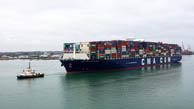Overview of International Maritime Transport
International maritime transport is a global logistics system that enables the movement of goods and products across the world. It is characterized by its extensive reach, standardized procedures, and long transit times. This mode of transportation plays a crucial role in connecting manufacturers with consumers, facilitating trade, and supporting supply chain management. The global nature of maritime transport ensures that products can travel efficiently from one country to another, making it a vital component of international trade.
One of the key features of international maritime transport is its standardized operational processes. This includes the use of containers, standardized documentation, and adherence to international regulations such as those under the International Maritime Organization (IMO). These standards ensure safety, reliability, and efficiency in the transportation process. The use of containers simplifies packaging and reduces the risk of damage during transit, making it a preferred method for transporting bulky or perishable goods.
Another important characteristic of international maritime transport is its long transit time. Unlike air transport, which offers rapid delivery, maritime transport typically takes several weeks to months to complete a journey. Despite this, it remains cost-effective for long-distance shipments, especially for oversized or heavy goods. This long transit time also allows for better synchronization of schedules, ensuring that goods arrive at their destination when needed.
Cost-effectiveness is another advantage of international maritime transport. It is often more economical than air transport for goods that do not require express delivery. Additionally, the use of containers and standardized documentation reduces costs associated with packaging, shipping, and documentation. However, the long transit time and potential for delays can impact delivery schedules, which is something businesses must consider when choosing a transportation mode.
Risk management is a critical aspect of international maritime transport. The shipping industry is generally safe, but risks such as mechanical failure, cargo loss, or natural disasters can still occur. To mitigate these risks, companies often implement additional safety measures, such as using specialized containers, having insurance in place, and conducting regular safety audits. These measures help ensure the smooth and secure movement of goods.
Lastly, international maritime transport has an environmental impact. While it is not the most eco-friendly mode of transportation, advancements in fuel efficiency and cargo management are reducing its environmental footprint. Innovations such as electric ships and better waste management systems are helping to minimize the ecological impact of maritime transport.
In conclusion, international maritime transport is a vital component of global trade, offering a reliable and cost-effective way to move goods across the globe. Its standardized processes, while ensuring safety and efficiency, also present challenges such as long transit times and potential delays. By understanding these characteristics, businesses can make informed decisions about their transportation strategies and ensure the successful delivery of their products.
